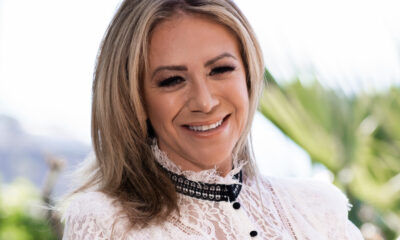GUIDE
Understanding Aviation Injuries: Causes and Legal Rights

Plane crashes and other aviation accidents resulting in injuries are regrettably more common than many people realize. For those injured or killed, as well as their families, the physical pain and emotional trauma can be overwhelming.
That’s why it’s important to understand what causes aviation injuries, the legal rights of victims, who can be held responsible, how investigations work, and potential settlements. This article explains these key issues in simple terms to assist anyone dealing with the aftermath of an aviation accident injury.
What Causes Aviation Injuries
Many different factors can lead to injuries and deaths in plane crashes and other aviation accidents. Research by the National Aeronautics and Space Administration reveals that 70% of aviation accidents involve human error, with pilot error being a significant contributor to aircraft incidents worldwide. Some other common causes include:
- Mechanical failure – Problems with the plane’s engines, electronics, or other systems. Regular maintenance and inspections aim to prevent these issues.
- Weather conditions – Encountering turbulence, icing, wind shear, poor visibility or other hazardous weather. Pilots receive training on handling different weather scenarios.
- Communication failures – Misunderstandings between pilots, air traffic controllers on the ground, or ground crew can lead to accidents. Clear communication protocols aim to avoid these.
- Improper maintenance – Insufficient inspections, repairs or servicing of aircraft can also be a factor. Mechanics must closely follow all repair manuals.
- Design flaws – Sometimes the aircraft structure, software, controls or systems are designed poorly. Extensive testing aims to catch design issues.
- Mid-air collisions – These mostly occur in congested airspace when proper separation between planes isn’t maintained. Air traffic control tries to prevent mid-air collisions.
Understanding the causes of injuries is a crucial initial step in preventing future accidents and ensuring justice for victims.
Legal Rights of Victims
In the United States, federal laws provide certain rights and protections for victims injured in aviation accidents. These laws allow victims to potentially recover damages and compensation for losses, such as medical expenses, lost income, pain and suffering, and other costs related to their injury.
The Warsaw Convention is a treaty that governs liability for international aviation accidents. It sets limits on the damages airline carriers must pay to injured passengers.
The Death on the High Seas Act provides a way for families of those killed in crashes on international waters to pursue wrongful death claims against negligent parties.
In addition, each state has its own laws regarding negligence, personal injury, and wrongful death lawsuits. These allow victims to file claims and lawsuits at the state level.
Victims should consult with an experienced aviation accident attorney to fully comprehend their U.S. federal and state legal rights and options. An attorney well-versed in personal injury claims, such as a Myrtle Beach personal injury lawyer, can guide recovering deserved compensation specific to the complex U.S. legal system.
Who Can Be Held Responsible?
When looking into an aviation injury, it’s important to identify the individuals, companies, or agencies that may share responsibility. Possible responsible parties include:
- Aircraft owners – If they fail to properly maintain, inspect, or operate an unsafe plane.
- Manufacturers – For potential design flaws, defective systems, faulty manuals, or pilot training.
- Operators – Airlines and charter companies can be negligent through poor maintenance, inadequate crew training, or lax safety oversight.
- Air traffic control – For communication errors or improper aircraft spacing and sequencing.
- Government agencies – If they fail to adequately enforce safety regulations.
- Individuals – Pilots, mechanics, or other flight crew members—may be held responsible for errors.
- No one – Some accidents are unpreventable “acts of God,” like bird strikes, but this is rare.
Identifying all potentially liable parties guides the investigation and settlement negotiations.
Investigations and Settlements
After an aviation accident that causes injuries or deaths, a careful investigation is super important. This involves collecting evidence and talking to people to figure out what happened. These investigations help victims build strong legal cases, but they can take a long time.
Once the investigation is complete, there is often a lengthy process of negotiating settlements. This is where the people affected by the accident try to agree on how much compensation should be paid. The ones responsible for the accident usually want to pay less, while the victims want full compensation. Mediation and arbitration can help with these discussions. Sometimes, structured settlements are spread out over many years to help with long-term expenses.
Through thorough investigations and diligent efforts in settlements, victims can hopefully receive the compensation they deserve. Having a skilled personal injury lawyer is crucial in this period. These investigations also give us important information to make aviation safer in the future.
Financial Assistance for Victims
Recovering from an aviation accident injury can be very expensive. Victims may have major medical bills, be unable to work, and need long-term care. Financial assistance programs can help.
Some options for financial help include:
- Health insurance – Victims should utilize their health insurance coverage if they have it.
- Disability benefits – Government disability programs or private insurance may provide income if a victim cannot work.
- Legal aid societies – These nonprofit groups offer free or low-cost legal help for accident victims.
- Victim compensation funds – Some government and nonprofit programs offer monetary aid to victims.
- Crowdfunding – Websites like GoFundMe allow victims to fundraise for expenses.
- Settlements and lawsuits – Compensation obtained from responsible parties can also assist victims.
Emotional Recovery
Dealing with the trauma of being hurt in an airplane or helicopter crash can be very emotional. Many victims experience depression, anxiety, PTSD, and other mental health problems. Different resources can help people recover emotionally:
- Seeing a counselor or therapist regularly to talk through feelings
- Support groups to share experiences with others who went through similar traumas
- Relaxation, like meditation or yoga, to manage stress and anxiety
- Medicines like antidepressants, if prescribed by a doctor
- Trained service dogs that help comfort trauma victims
- Websites with mental health advice and connections to other victims
Frequently Asked Questions
What causes the most aviation injuries?
Human mistakes cause up to 80% of crashes. Over half are from pilot error. Mechanical problems, weather, bad communication, and poor maintenance also lead to many accidents.
Who can be blamed for an accident?
Owners, manufacturers, operators, air traffic controllers, government groups, and individual crew members may be liable. Lawsuits often have multiple parties at fault.
What rights do injured people have?
Indian law gives victims certain rights, like filing charges, seeking repayment for losses, and claiming damages. The PMLA defines aviation victims’ right to compensation.
Conclusion
Being badly hurt in an airplane or helicopter accident can greatly impact victims’ lives. Learning key things like what causes crashes, who can be blamed, investigations, and legal rights helps victims get fair payment through a settlement or lawsuit.
While reducing aviation injuries may be hard, following best practices can help limit accidents and support victims. An experienced lawyer for injury cases can advise and represent victims seeking justice after being hurt in aviation accidents.








